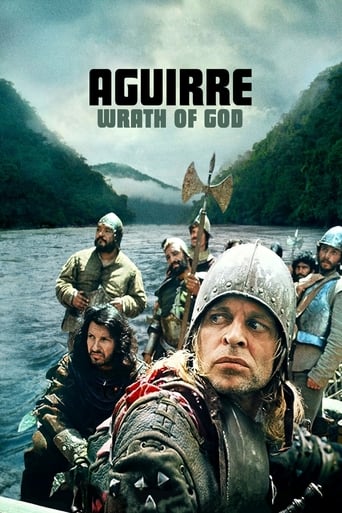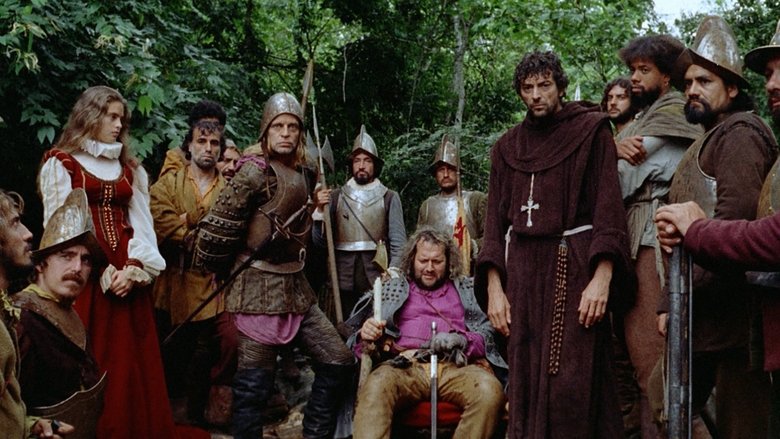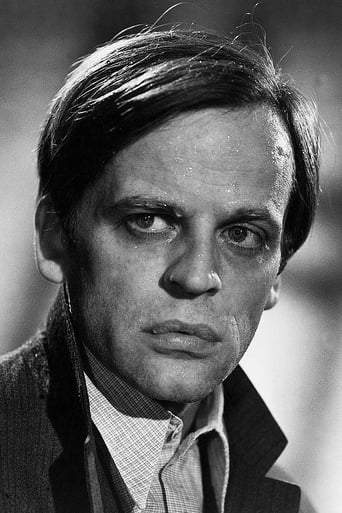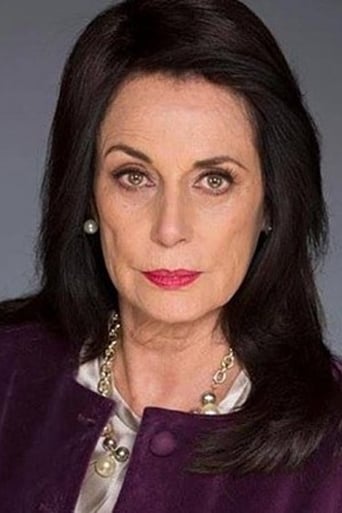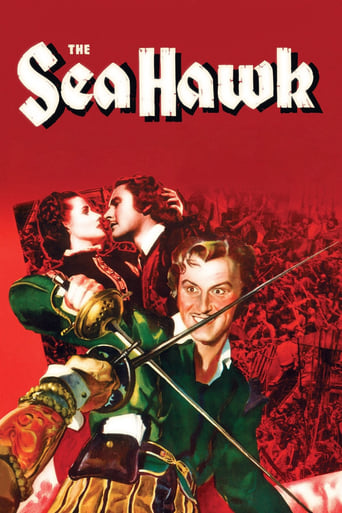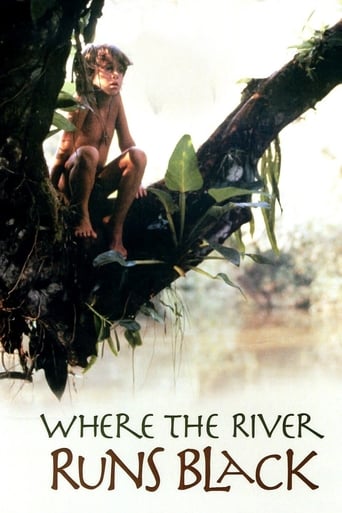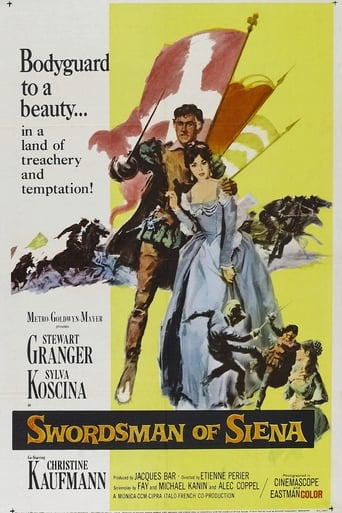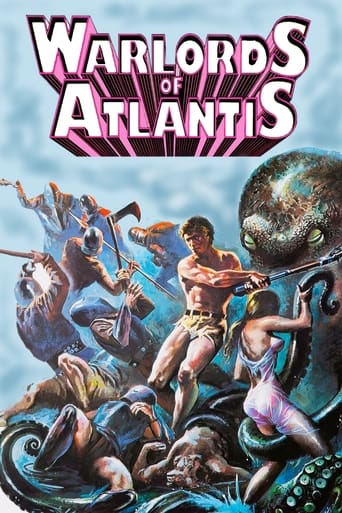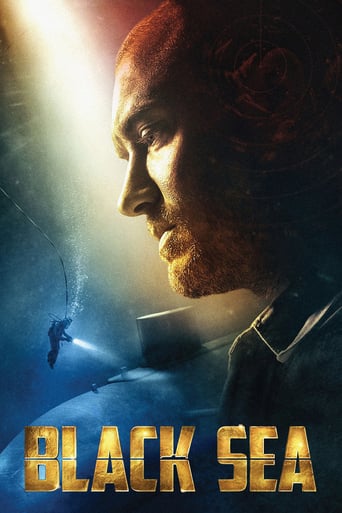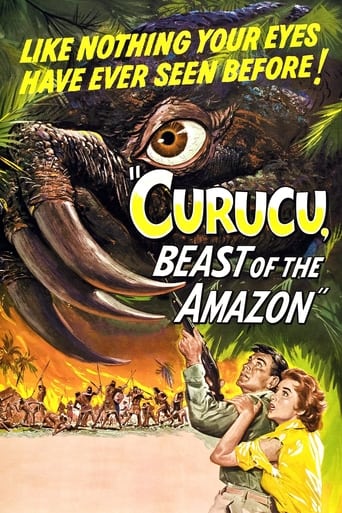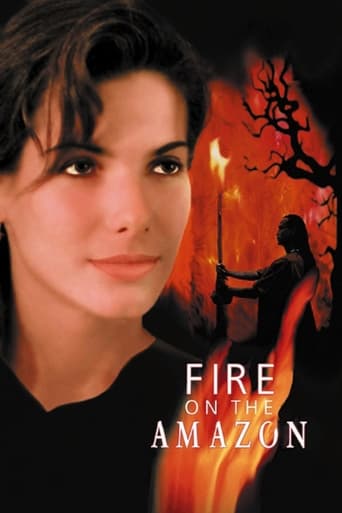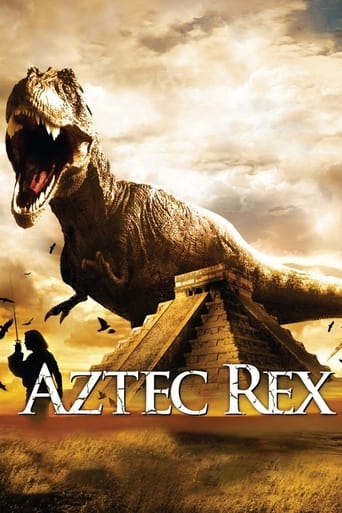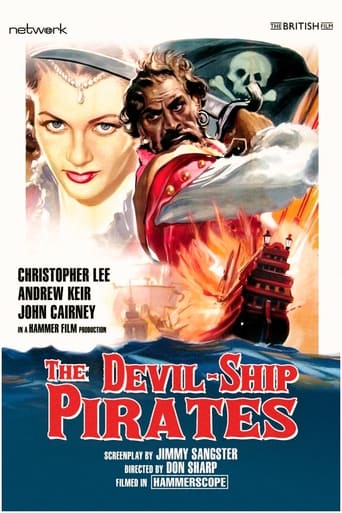Aguirre, the Wrath of God (1972)
A few decades after the destruction of the Inca Empire, a Spanish expedition led by the infamous Aguirre leaves the mountains of Peru and goes down the Amazon River in search of the lost city of El Dorado. When great difficulties arise, Aguirre’s men start to wonder whether their quest will lead them to prosperity or certain death.
Watch Trailer
Cast
Similar titles
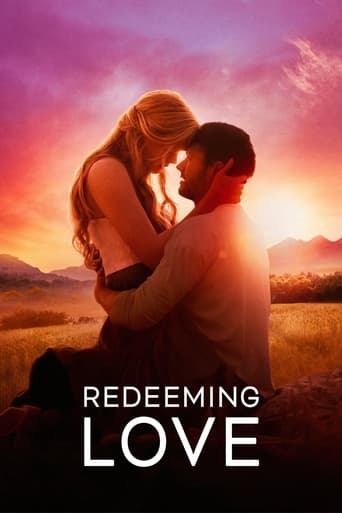
Reviews
Simply A Masterpiece
i must have seen a different film!!
From my favorite movies..
Clever, believable, and super fun to watch. It totally has replay value.
An epic adventure with qualities of an art film that's pleasant and easy to follow. Focus of the film seems to be on the alien environment and in obstinacy leading to insanity. There isn't a lot of dialogue, and all the little it has is oddly formal, adding to the already odd atmosphere. Film centers almost solely on Klaus Kinski's character, with other characters been set aside. Thankfully Kinski carries movie superbly, making phenomenal, mainly only physical performance. Technically film's solid work with some great shots and good editing. Considering all the craziness that happened during making this film, it manages to be one of the best films of it's era.
Herzog's third fiction feature, made when he was only 30, AGUIRRE, THE WRATH OF GOD is a genuine astonishment in the world cinema and its status as the magnum opus among Herzog's eclectic canon has been here to stay 45 years on. The sublime aerial shots which open the film ram home that the painstaking endeavor is the real deal, the crew does go off the beaten path into the ethereal mountains, a mesmerizing hands-on style of filmmaking which has its built-in allure simply because who will not be in awe of a film takes so much human labor against the elemental force to make itself happen (the legendary Herzog-Kinski pair would go to extremes in FITZCARRALDO, a decade later), particularly at a time when the preponderance of offerings hitherto had been studio- bound, steeped in artificial aesthetics.In search of El Dorado, in the mid-16th century, a gold-crazed contingent of Spanish conquistadors goes deep into the Peruvian rain forest, lead by Pedro de Ursúa (famed Portuguese filmmaker Guerra), second-in-command Lope de Aguirre (Kinski), Brother Gaspar (Negro), a rotund nobleman Fernando de Guzmán (Berling), among others, two females, Inés (Rojo), Ursúa's wife and Florés (Rivera), Aguirre's teenage daughter, and many Indian slaves. Most of the time, the team steers their route on rafts, but comes in for successive adversities in the hands of the unfathomable nature mother, one raft trapped by an eddy among the rapids causes a horrific aftermath, just when Ursúa commands to abort the scouting mission and backtrack, Aguirre precipitates a mutiny, keeps a wounded Ursúa as prisoner and puts Guzmán on the throne as the emperor of the new kingdom, because he firmly believes, they will find the gold, then their mission continues.Story-wise, the film is pretty garden-variety, and decidedly trimmed down to the nexus, Aguirre and co. are real historical personages, the expedition and mutiny are true happenings, but Herzog fictionalizes their journey en route and the grim wind-up. Barely landing their feet on solid soil, the conquistadors are singled out one by one by unseen enemies hidden in the forests through poisoned arrows, often proceeded by dead silence.However, in Herzog's method, the suspense and dreadfulness is toned down by his dispassionate temperament, which would be made into great play in his equally robust documentary filmmaking. Merely watchful and often centering on Kinski's distinctively fierce and emotive visage, the camera expends more time perusing the biome's vista (the ship snagged on top of a tree is a coup de maître of the then young filmmaker, flagging up its powerful metaphoric impact and ludic whimsy) than engaging in the narrative proceedings as their ill-fated destiny lurking ahead, until the final majestic 360-degree twirling shot sending the megalomaniac stranded with numerous skittish monkeys on the raft, paranoid, bereft and dream-dashed.In any fair sense, the film is less potent as a character analysis of an outrageous madman than a gorgeous landscape porn, utterly otherworldly for those outsiders, but Kinski still hounds you with his muted aggro, lunacy and repellence (by dint of Herzog's tactful maneuver, who deliberately lets Kinski rip in his more frenetic performance, but saves the actual shots for the moments when he is abated or simply worn out), which would go beyond the pale in FITZCARRALDO, but here, the final impression is much more balanced and nuanced.One cannot finish the review without mentioning the acclaimed score composed by the West German avant-garde band Popol Vuh, it is unearthly but not intrusive, a bespoke incident music which leaves its repercussions long after the film reaches its finish-line.
I was interested in seeing this movie upon seeing it appear in Roger Ebert's list of Top 10 favorites movies of all time. I think it might have been the only Foreign Language film on the list. Then again, I think "La Dolce Vita" might have been there too. I'll just say it's his pick for best foreign language film. And honestly? I think it's probably mine too. I'm normally not into Foreign Language films, but this is a breathtaking exception. The plot is quite basic, with a group of Spanish explorers searching for the legendary El Dorado.I am reminded of reading the book "War And Peace". It was great just to see the area being described, but it was the deep dialogue that really made it readable (is that a word?). The same works here. The camera work is among the best I have ever seen in a movie. I just love the way it shows people off in the distance and how it focuses on the most important things. Everything about this movie just looks beautiful. I love the costumes, I love the animals (who must be real), I love the environment, it's simply a gorgeous film. There is some action in it, but for the most part, they just have realistic stuff going on. The entire movie takes place outside and I don't think anyone is ever in a house.That's a wonderful and unique way to film. Even the very first scene had me hypnotized. It's beautiful to see these people being led along a mountain. Near the end of the movie, the title character Aguirre is told there is probably no golden city, but wants to conquer whatever he finds. Mixed throughout the film are insightful messages about politics and religion and the true motivations behind these ideals. It's one of the most philosophical movies I've seen in a long time. The title is spoken in a wonderful way as this is how Aguirre sees himself. The film never really ends, it just stops with little progress made in the entire story. It works wonderfully that way.What's great is just how amazingly realistic this film is. It shows how we crave glory and how we act around people of different races and beliefs. Everything just molds together for a wonderful visual feast. Near the end, we're not even sure of what's real. A guy is hit with an arrow, but it might just be in his (or someone else's) imagination. It is this delusion that makes us question exactly what goes on around us. After watching such horrible movies like, "They Saved Hitler's Brain", "Dracula Vs. Frankenstein", and "Doomsday Machine" this was an inspiring thing to watch. The only bad thing about this movie is that it's only a hour and a half! It seemed more worthy of being a truly epic film. Still, it works wonderful with its time and I obviously recommend it. ****
Werner Herzog's 'Aguirre, the Wrath of God' is not a film that can be merely watched, it has to be experienced. While watching the film, I truly thought that Herzog didn't just convey a story, he put a bit of his heart and soul on screen. The film stars Herzog's frequent collaborator, the eccentric and volatile Klaus Kinski who plays the titular role of Aguirre. Although the story is loosely based on real events, the script is pretty much a fictional account of the travels of a Spanish soldier named Lope de Aguirre who leads a group of conquistadores and their Indian slaves down the Amazon river in South America to find El Dorado, the city of gold.The film commences with a prolonged single shot of the line of conquistadores with the Indian slaves going down a mountain and the shot is slightly obscured by the mist. The camera stays stationary while it captures the scene. It is a shot that is immensely beautiful in its surrealism while also being thematically transcendental. The men look like ants walking in a straight line. They have huge ambitions of conquering lands and becoming rich, but they are nothing but tiny ants in comparison to the vastness of the mountain and the surrounding elements of nature. Popol Vuh's haunting music lends a spiritual undertone to the entire film.I believe this film is about man's obsession with power, fame and superiority and how God in the form of nature can be completely indifferent to these obsessions and ambitions. I think the principle of accepting nature as God like it is done in some religions like Hinduism is the basis of interpreting the meaning of the film. When the conquistadores led by Aguirre try to ransack nature, nature hits back. All the deaths happen off- screen. We are never shown anyone firing the arrows at the conquistadores. We just see the arrows flying towards them, almost creating the impression nature is fighting back and thwarting the greedy conquerors. This aspect of man's mad obsession falling prey to the nature's forces was clearly an inspiration for Coppola's 'Apocalypse Now'. Aguirre is the manifestation of the greed and lust for power that humanity can fall prey to internally. His obsession spreads through the others in the mission and anyone who questions Aguirre gets dealt with mercilessly. Considering that this film was the creation of a German filmmaker, I found it very difficult to not think about Hitler and Nazi Germany. Aguirre shares Hitler's colonial obsession with annexing other countries and conquering nations. We also get another similarity between Hitler and Aguirre in their desire to create a pure dynasty. The film's production and shooting processes have become infamous due to all the troubles that Herzog had to face in the form of lack of money, highly treacherous filming locations and the anger of the extremely volatile Klaus Kinski. But he kept on persisting and his obsession in making the film almost mirrors Aguirre's unflinching obsession to find 'El Dorado'. There are many signature shots of Herzog's surrealist film language like the shot of a ship hanging at the top of a tree, a scene where Aguirre holds a newborn sloth and is appreciating its beauty and telling his daughter how naive it is and how it has remained asleep for the major portion of its life, but we know that Herzog clearly wants to say that it is the humans who are sleeping and naive in trying to assert their superiority over nature. Herzog also critiques religion in the film. There is a clear distinction that Herzog establishes between organised religion and God. His guerilla style of filmmaking actually accentuates and captures the madness in the story instead of serving the purpose of being a gimmick. Apart from Werner Herzog, the other person whose name has to be mentioned is Klaus Kinski. Everyone mentions Anthony Hopkins in 'Silence of the Lambs' when talking about an actor having an immense impact and owning a film with very limited screen time, I think such a discussion should also include Kinski's portrayal of Aguirre. Even with limited screen time Kinski has an undeniably chilling impact. Every gesture and every mannerism of his is expressive. His character's madness and obsession gets expressed through his postures and his eyes. This is one of those legendary screen performances that not only ornaments the film, but also ends up elevating it.To end this review I will analyse the last shot of the film. The final images will stick with me forever due to the beauty and the depth of what's on screen. There are corpses lying everywhere on the raft. Aguirre is the sole figure still standing. He holds his dying daughter. We see Aguirre's hand soaked in his daughter's blood which figuratively conveys that her death is on his hands and in the bigger picture it establishes the perils of the coming generations due to the greed fuelled obsessions of their ancestors. Now we had earlier seen the soldiers torturing animals, but now a group of numerous monkeys are seen invading the raft, thus signifying nature completing its revenge. Aguirre is still holding on to his deluded obsessions and moving on. This is one of the most beautifully poignant ending to any film I have ever seen.Aguirre, the Wrath of God is a philosophical work of art. It is not for everybody and I can only recommend it to hardcore art-film lovers. But the themes explored in the film are giant-sized. I can't stop thinking about it even after days of watching the film.Aguirre says that he is the 'Wrath of God' and then looks directly at the camera. He thinks he will do whatever he wants and no one can stop him. His naivety prevents him from realising that he is not the 'Wrath of God', he is just a victim of the same.
